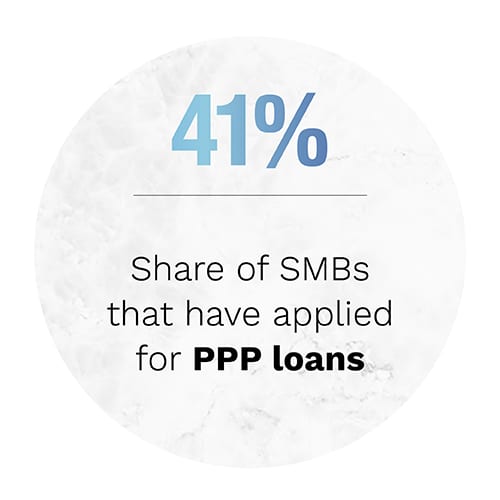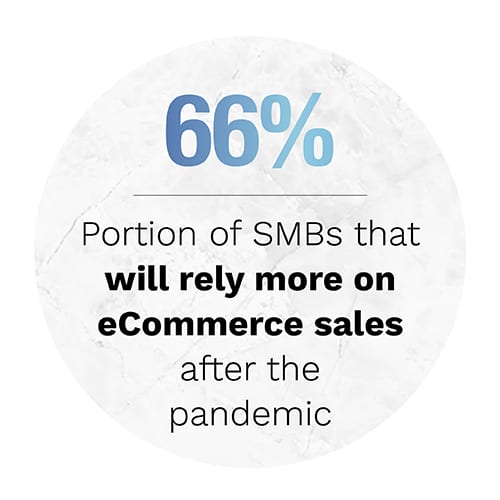
The COVID-19 pandemic has triggered a massive consumer migration to digital commerce. Consumers living under stay-at-home orders are going online to manage their personal and professional lives. Consumers’ use of their computers to work remotely and shop for retail items in fact has increased 19 percent and 31.7 percent, respectively.
 PYMNTS research has shown that this surge in demand for digital will likely extend far longer than the pandemic itself. Our research suggests that 29.5 million consumers plan to continue working from home either more of the time or all the time after the economy reopens, while 24.7 million say they will not go back to eating in restaurants at all. This signals that digital-first life is here to stay, regardless of when stay-at-home orders are lifted.
PYMNTS research has shown that this surge in demand for digital will likely extend far longer than the pandemic itself. Our research suggests that 29.5 million consumers plan to continue working from home either more of the time or all the time after the economy reopens, while 24.7 million say they will not go back to eating in restaurants at all. This signals that digital-first life is here to stay, regardless of when stay-at-home orders are lifted.
Will small- to mid-sized businesses (SMBs) follow consumers’ lead and digitize their operations to meet their new demands? Or will they revert back to their pre-pandemic habits and miss the opportunity for growth?
These are just a few of the questions we sought to answer in Main Street On Lockdown: Reinventing The Road To Recovery edition. PYMNTS surveyed 437 SMB owners from throughout the United States to gauge how they have adjusted their operations to meet the current economic reality and how they plan to operate once the pandemic is over.
Our research shows that the majority of SMB owners remain attached to their pre-pandemic business models, even though they recognize that consumers’ expectations are likely to change going forward.
One concrete example of how businesses plan to maintain their pre-pandemic operations is that they plan to keep renting the same amount of physical space as they had before, despite the fact that they expect most of their post-pandemic sales to be generated online. Our research shows that 66.4 percent of all SMBs believe online sales will make up a greater part of their revenues after the pandemic is over, but only 38 percent plan to reduce the amount of physical space  they use to sell products in-store.
they use to sell products in-store.
Owners whose businesses had been the most heavily reliant on in-store sales before the outbreak are the ones most resistant to downsizing, with 76.9 percent of all SMB owners who generated most of their sales in-store saying they planned to maintain the same brick-and-mortar presence as they had before the outbreak once the crisis has passed.
To learn more about how SMBs plan to change — or avoid changing — their business models for the post-pandemic market, download the report.